Blog Home
The £5 Coin Celebrating 350 Years of the Royal Observatory Greenwich
The Royal Observatory Greenwich is one of Britain’s greatest scientific landmarks. Established in 1675, it became the cornerstone for global navigation and timekeeping. And now, this remarkable legacy is captured in an equally remarkable £5 coin — a design that pays tribute to centuries of exploration, astronomy, and engineering.
Whether you’re a passionate numismatist or simply intrigued by the wonders of science, this coin is worth a closer look.
A Landmark in British Coin Design
At first glance, this isn’t just a commemorative piece — it’s a statement of precision. The design is deeply symbolic, dividing the surface into two distinct yet interconnected halves.
Running vertically through the centre is the Prime Meridian, the global reference point for time and space, originating at Greenwich. This bold line doesn’t just split the coin — it connects hemispheres and disciplines.
East: Gazing Upwards
On one side, the emphasis is celestial. The Great Equatorial Telescope dome of the Royal Observatory rises beneath a starry sky, where Ursa Minor and the North Star remind us of centuries of cosmic observation and navigation.
West: Mastering Time
Opposite, the design moves from stars to seconds. Intricate mechanisms represent Clock B, a pioneering free-swinging pendulum clock by Martin Burgess, renowned for its unmatched accuracy. It’s a tribute to human ingenuity — where measuring time became an art and a science.
Strictly Limited Editions
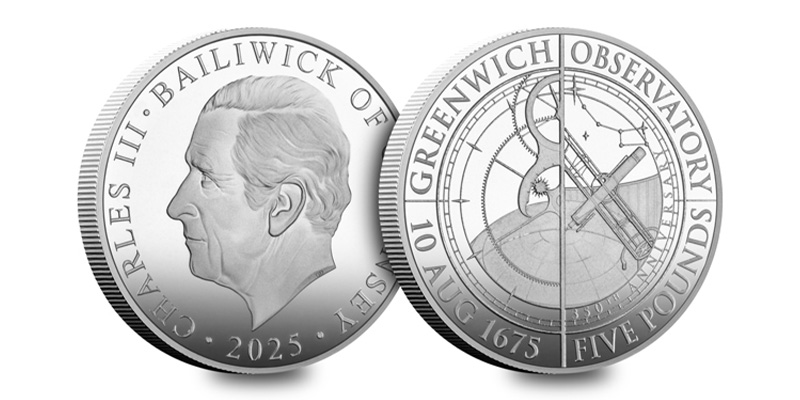
Each version of the coin has been officially approved by King Charles III, with limited edition quantities that are already generating excitement among collectors:
- Proof £5 Coin – Affordable and accessible, available now
- Silver Proof Edition – Extremely limited, under 1,000 worldwide
- Silver 5oz Specification – Just 350 minted, crafted in pure silver for collectors who appreciate the artistry in full scale
🌐 Explore the full range here: www.westminstercollection.com/observatory5
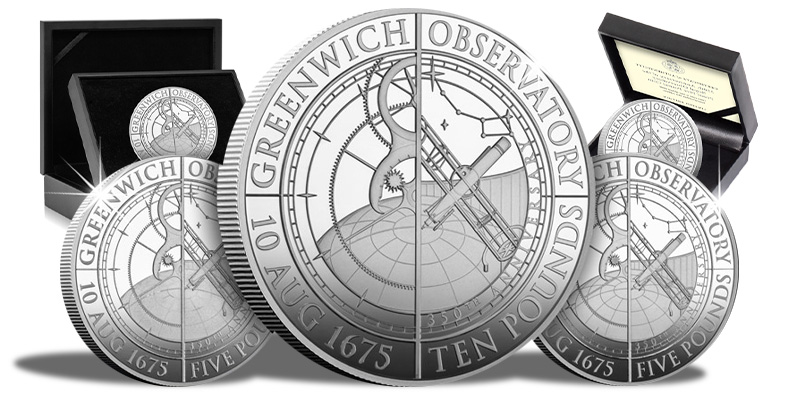
A Timeless Tribute
More than a coin, this is a celebration of where science changed the world. It honours not just the Royal Observatory, but the relentless pursuit of knowledge that placed Britain at the centre of global time and space.
A Royal Milestone in Coinage: The Coat of Arms of His Majesty King Charles III
On 8 September 2022, following the passing of Queen Elizabeth II, His Majesty King Charles III acceded to the throne — a moment that marked both reflection and renewal for the British monarchy. Now, in 2025, a major numismatic milestone marks this new reign: the first UK coin to feature the Royal Coat of Arms of King Charles III.
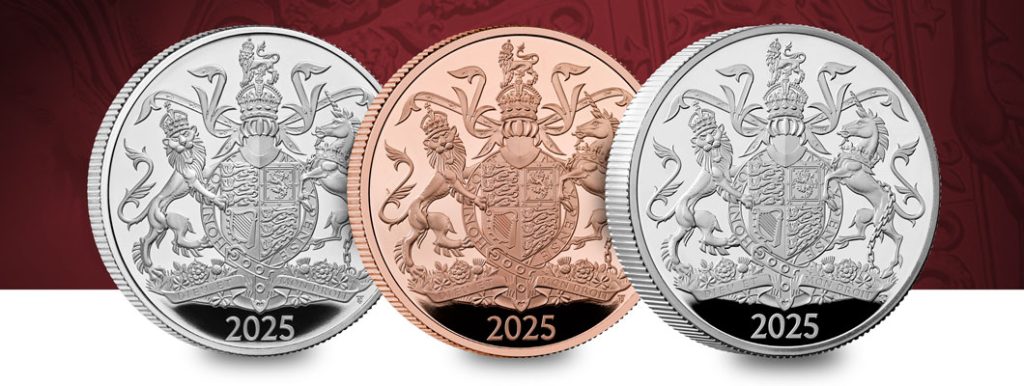
More than just a design, the Royal Arms are a time-honoured symbol of monarchy and national authority — and this historic debut offers collectors a once-in-a-generation opportunity to own a significant artefact of royal transition.
The Royal Arms Reimagined
For more than a thousand years, the Royal Arms have symbolised the authority, heritage, and continuity of the British Crown. Displayed on official state documents, courtrooms, government buildings, and even British passports, this heraldic emblem embodies the unity and sovereignty of the realm.
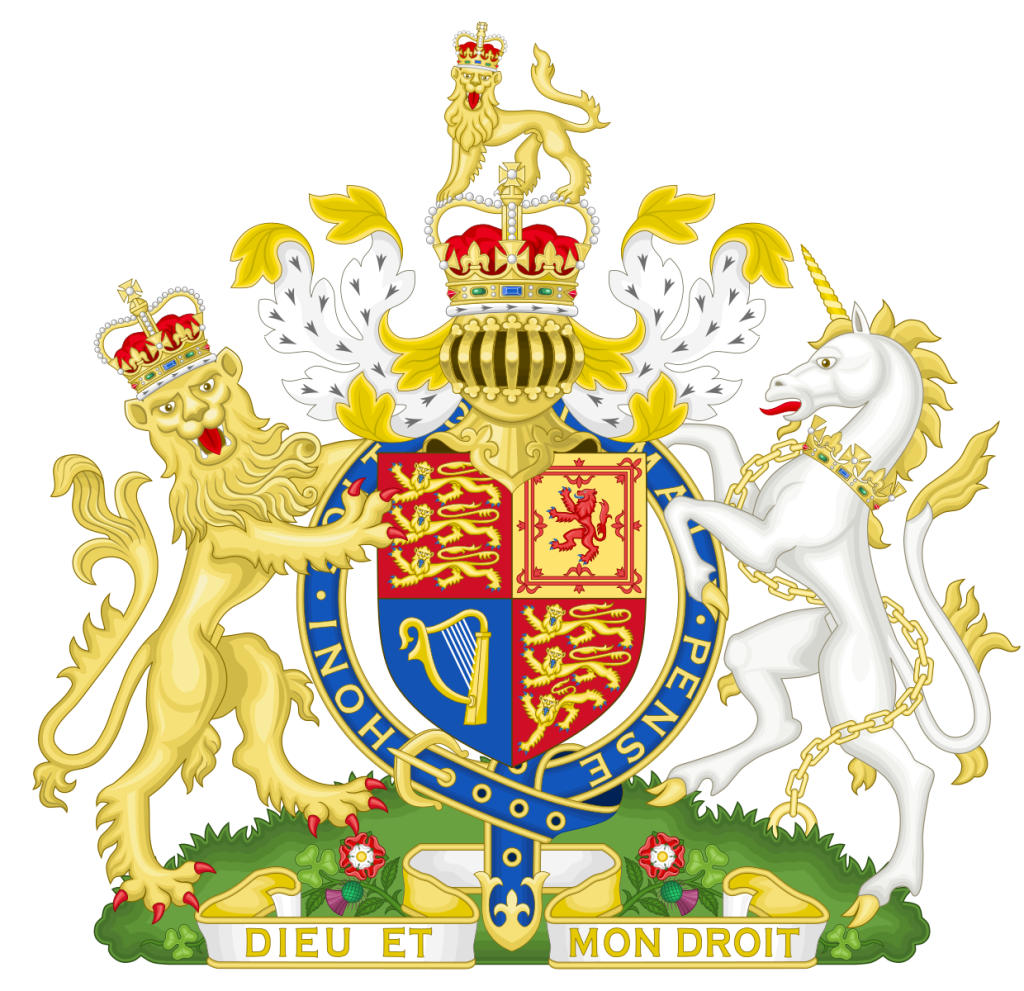
Image Credit: Public domain via Wikimedia Commons
During Queen Elizabeth II’s reign (1952–2022), her Royal Arms were ever-present and, at times, even appeared on coinage. Yet, this is the first time the personal Royal Coat of Arms of King Charles III has featured on a UK coin, offering a powerful expression of royal continuity and modern monarchy.
The 2025 Coat of Arms £5 coin showcases a newly commissioned design by Timothy Noad, one of Britain’s most celebrated heraldic artists. His interpretation honours the enduring traditions of the monarchy while introducing elegant modern detail.
Key elements of the design include:
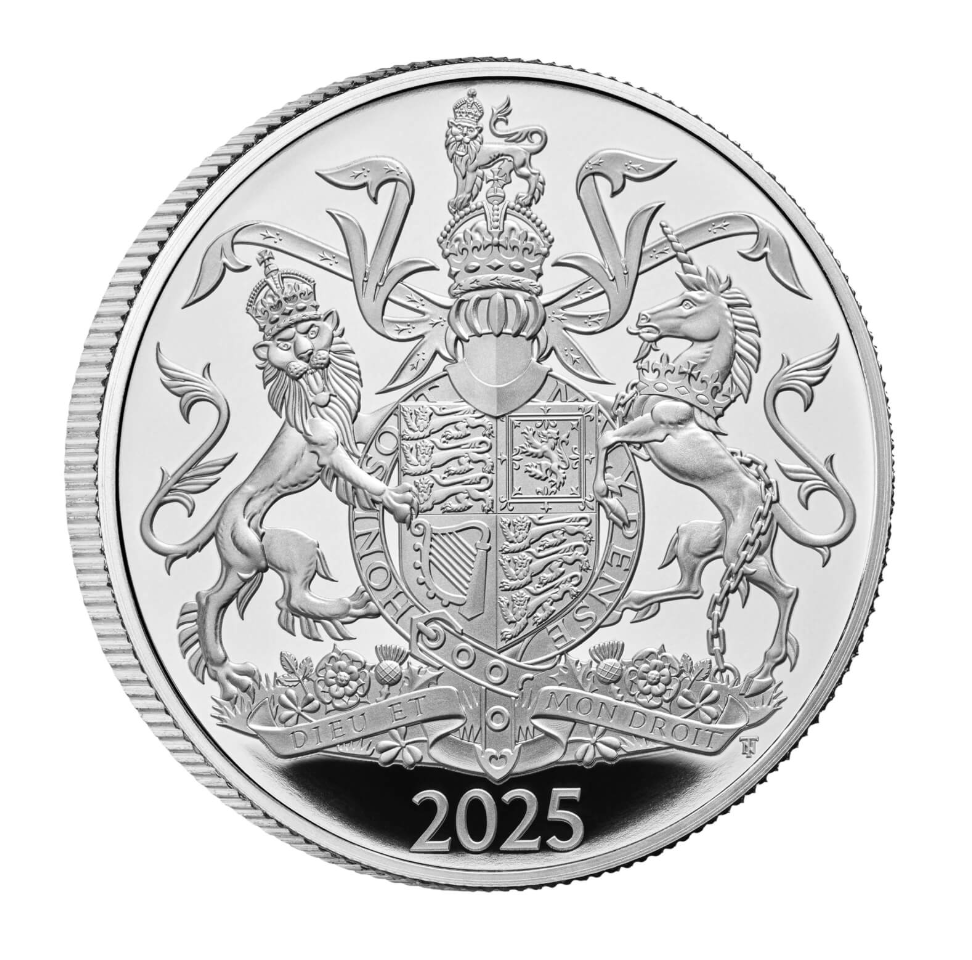
- The crowned shield, representing the nations of the UK
- The lion of England and unicorn of Scotland as noble supporters
- Heraldic flourishes symbolising duty, unity, and royal heritage
It is a timeless composition that reflects His Majesty’s lifelong commitment to tradition, the environment, and public service.
A History of Royal Arms on UK Coinage
While this is the first appearance of King Charles III’s Royal Arms, it joins a respected legacy of coinage bearing royal heraldry.
Under Queen Elizabeth II, the Royal Arms first appeared on the inaugural £1 coin, introduced in 1983 to replace the paper £1 note. The design by Eric Sewell, then Chief Engraver at the Royal Mint, featured a stylised version of Her Late Majesty’s Arms and became one of the most recognisable modern coin motifs.
The Royal Arms £1 was issued in:
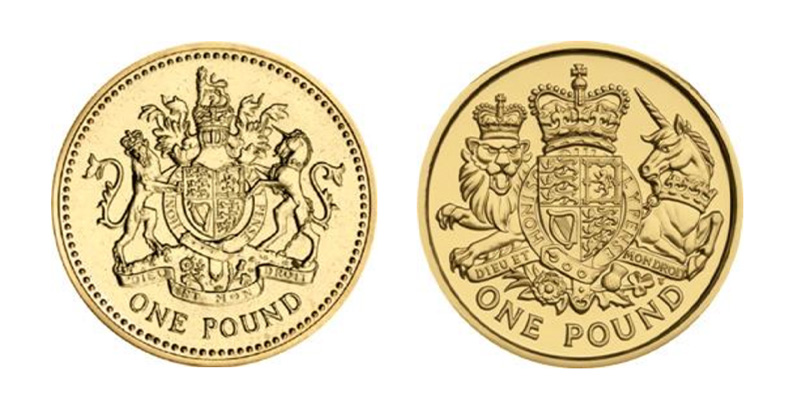
Right: The 2015 Royal Coat of Arms £1 was one of the last commemorative round pound designs
- 1983 – the very first year of the £1 coin
- 1993, 2003, and 2008 – each marking notable updates or anniversaries
In 2015, Timothy Noad was once again called upon to reimagine the Royal Arms for a commemorative issue of the round pound. Although that design did not enter circulation, it remains one of the last and most admired heraldic designs issued before the £1 coin was reshaped into its current 12-sided form.
The 2025 £5 release, therefore, represents not just a first for King Charles III, but also a historic continuation of the Royal Arms tradition on UK coinage — deeply valued by collectors with a passion for royal and constitutional heritage.
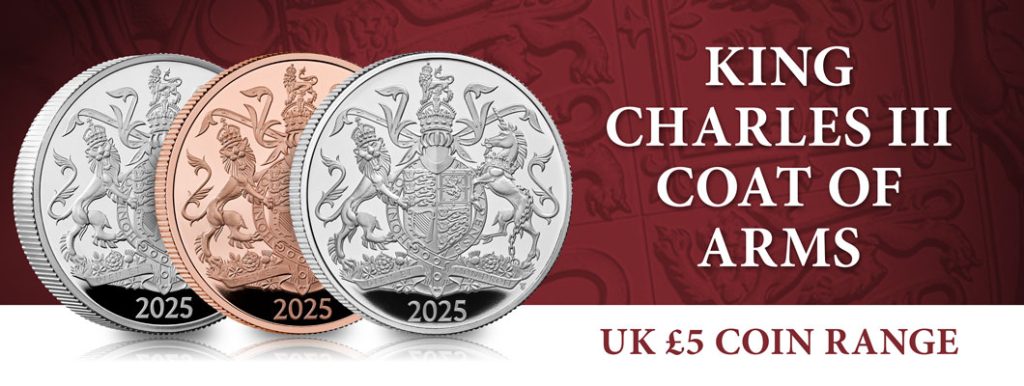
This historic debut is commemorated through an exceptional range of coins — each one a tribute to regal craftsmanship and British identity.
Why This Range Matters to Royal Collectors
- Commemorates a significant transition in the British monarchy
- Introduces the Royal Arms of King Charles III in official coinage for the first time
- Designs by Timothy Noad blend historic heraldry with refined modern artistry
- Every edition is produced to premium numismatic standards
- Rarity across the silver, Piedfort, and gold coins ensures high desirability and long-term collector value
Whether you’re a long-time royal enthusiast or a discerning investor in historic artefacts, the 2025 UK King Charles III Royal Arms coin range represents a landmark addition to your collection — and a tangible connection to the modern history of the Crown.
The Spitfire: Birth of a British Aviation Icon

On March 5, 1936, the skies above Hampshire witnessed an event that would reshape the course of aviation and military history. From Eastleigh Aerodrome (now Southampton Airport), the prototype of the Supermarine Spitfire took flight for the very first time—ushering in a new era of fighter aircraft engineering. With its elegant design and formidable performance, the Spitfire would soon become a symbol of British resilience in the face of war.
The Iconic Sound
↓ Hear the iconic sound of a Spitfire fly past. Click Play Below ↓
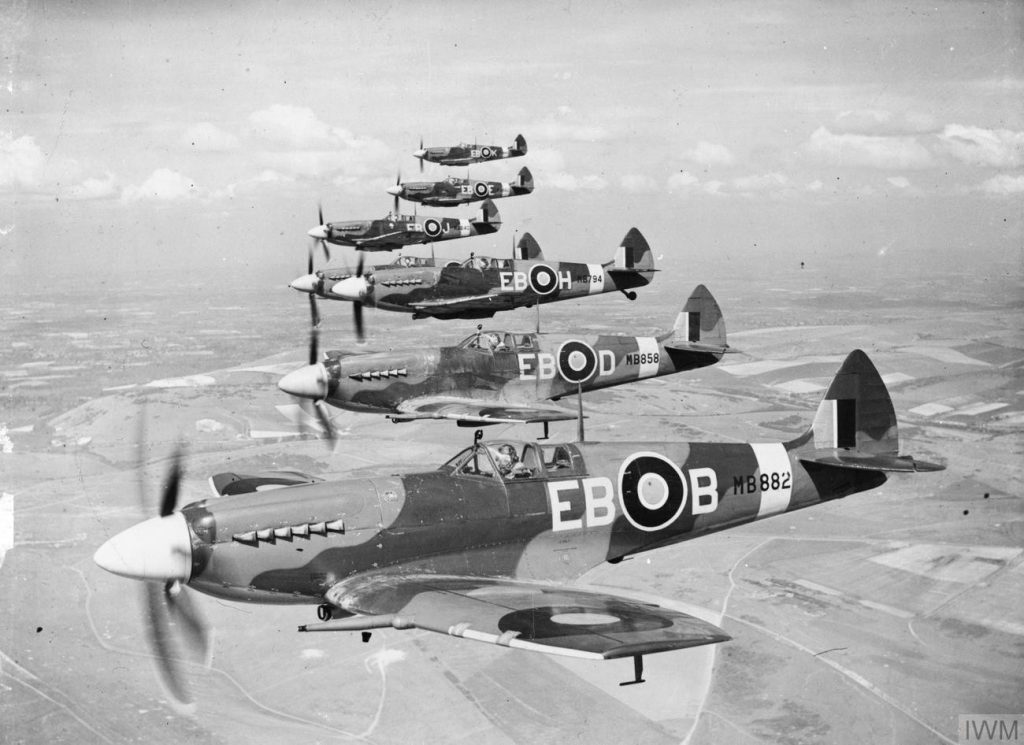
A Revolutionary Aircraft Takes Flight
The Spitfire was the masterpiece of Reginald J. Mitchell, the chief designer at Supermarine Aviation Works, part of Vickers-Armstrongs. Drawing from his experience designing high-speed racing seaplanes for the Schneider Trophy, Mitchell applied the same aerodynamic brilliance to the creation of a revolutionary monoplane fighter.
Did You Know? The Spitfire’s elliptical wing design wasn’t just stylish—it reduced drag and improved lift, giving the aircraft a tighter turning radius and better performance at high speeds than many of its contemporaries.
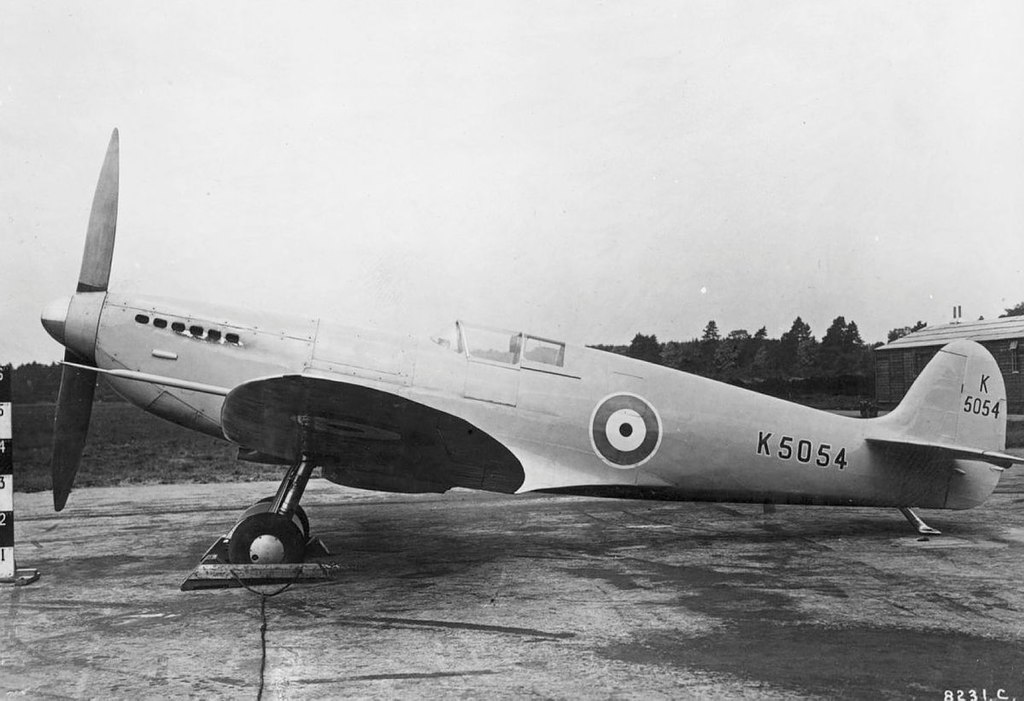
On that historic afternoon, test pilot Captain Joseph “Mutt” Summers climbed into the cockpit of prototype K5054. The aircraft, powered by the Rolls-Royce Merlin engine, performed so well during the short eight-minute maiden flight that Summers famously declared, “I don’t want anything touched!“
From Prototype to Production
The promising performance of the Spitfire’s first flight quickly caught the attention of the British Air Ministry. Just three months later, on June 3, 1936, an order for 310 Spitfires was placed, beginning what would become one of the most celebrated production runs in military aviation.
↑ Click the circles 🔴 in the image above to find out more about each part of the Spitfires Design. ↑
Did You Know? Over 20,000 Spitfires were built between 1936 and 1948, making it the most produced British fighter aircraft of World War II.
Despite early production challenges, the first units reached RAF squadrons by 1938, positioning the Spitfire as a critical asset just as tensions in Europe escalated.
Defender of Britain’s Skies
The Battle of Britain in 1940 cemented the Spitfire’s place in legend. While the Hawker Hurricane bore the brunt of the fighting, the Spitfire was instrumental in duels with the Messerschmitt Bf 109, Germany’s top-tier fighter. Its superior speed, rate of climb, and maneuverability made it a favourite among pilots and a feared opponent in the sky.
Did You Know? The Spitfire’s wings were so thin and strong that eight .303 Browning machine guns were housed within—an innovative feature at the time.
Its agility and speed became not only a tactical advantage but also a psychological one, bolstering the morale of Allied forces and the British public alike.
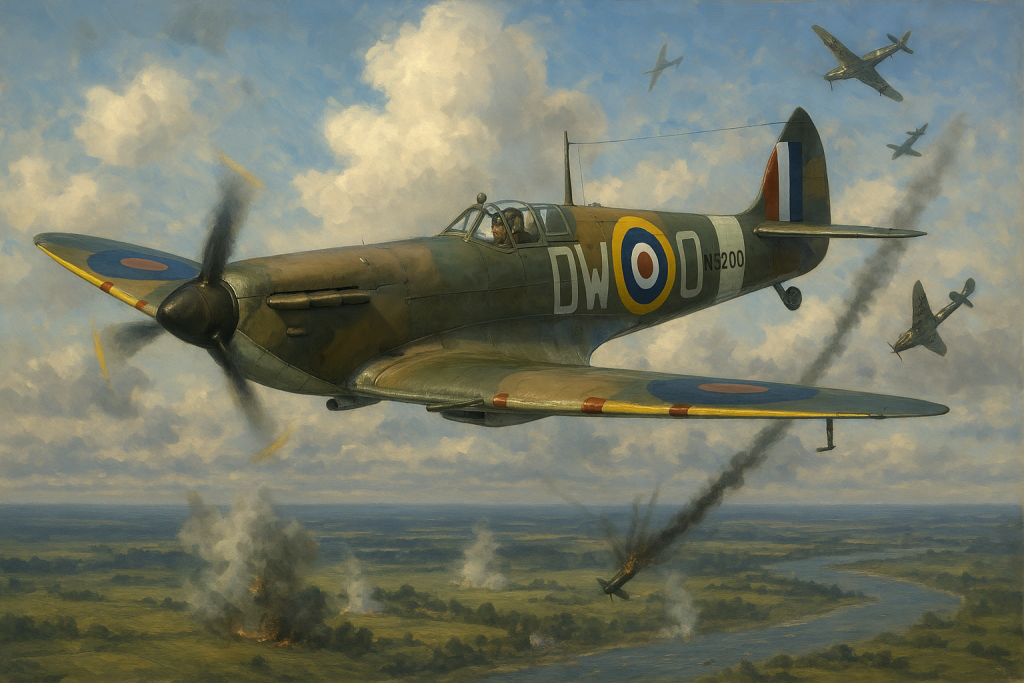
A Versatile and Evolving Design
The Spitfire was never a static design. Instead, it evolved through over 20 major variants, adapting to every phase of the war. As roles shifted, so did the aircraft: from interceptor to photo reconnaissance, from air superiority fighter to carrier-based Seafire.
Did You Know? Some Spitfires were specially equipped with cameras instead of guns and flew unarmed reconnaissance missions, providing vital intelligence over occupied Europe.
Later models even incorporated the Rolls-Royce Griffon engine, pushing the aircraft to greater altitudes and speeds.
The Legacy Lives On
Even decades after the guns fell silent, the Spitfire remains one of the most recognisable and admired aircraft in the world. Dozens of airworthy Spitfires still grace airshows and commemorative events, their distinctive Merlin engine roar still sending chills down the spine of all who hear it.

Did You Know? The name “Spitfire” was suggested by Sir Robert McLean, the then-chairman of Vickers, who reportedly described his spirited daughter as a “little spitfire.”
From wartime hero to timeless icon, the Spitfire continues to represent the innovation, courage, and determination of an era defined by conflict and triumph.
The Supermarine Spitfire’s first flight was more than a test—it was the beginning of a legend. Its combination of engineering brilliance, combat performance, and enduring symbolism has made it one of the most admired aircraft in history. From its role in defending Britain’s skies during World War II to its continued presence at airshows and in the hearts of aviation enthusiasts, the Spitfire is a testament to innovation and bravery.
Celebrate 85 Years Since the Battle of Britain

2025 marks the 85th anniversary of the Battle of Britain—a defining moment in British history where the Spitfire played a heroic role. To commemorate this significant milestone, we invite you to explore our exclusive range of Spitfire commemoratives, honouring both the aircraft and the brave pilots who flew them.
